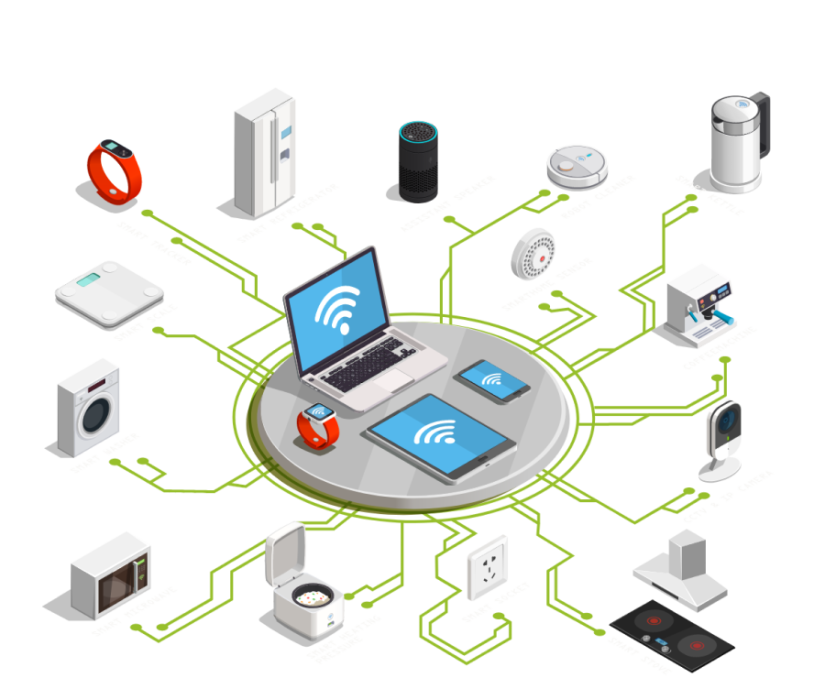Imagine this: you're chilling at home, sipping on your favorite coffee, while your smart thermostat adjusts the temperature automatically. Now, what if you could control that same thermostat from miles away? That's where the magic of login remote IoT app comes into play. It's not just about convenience; it's about revolutionizing how we interact with technology. Today, we're diving deep into this game-changing concept, exploring its benefits, challenges, and how it's shaping our connected world.
Let's face it, the Internet of Things (IoT) has grown exponentially, connecting billions of devices worldwide. But here's the kicker: without a reliable way to access these devices remotely, the whole concept falls flat. That's why mastering remote IoT app login is crucial. Whether you're a tech enthusiast or a business owner, understanding this technology can open doors to endless possibilities.
So, buckle up, folks! In this article, we'll break down everything you need to know about logging in remotely to IoT apps. We'll cover the basics, advanced features, security concerns, and practical tips. By the end of this, you'll be equipped with the knowledge to harness the full potential of your IoT devices from anywhere in the world. Let's get started!
Read also:How Old Is Philippa Braithwaite Unveiling The Stars Journey And Age
Table of Contents:
- What is Remote IoT App Login?
- Key Benefits of Remote IoT Login
- How Does Remote IoT App Login Work?
- Security Considerations for Remote IoT
- Top Tools for Remote IoT App Login
- Step-by-Step Guide to Set Up Remote IoT Login
- Troubleshooting Common Issues
- The Future of Remote IoT App Login
- Best Practices for Remote IoT Login
- Final Thoughts
What is Remote IoT App Login?
Alright, let's start with the basics. Remote IoT app login is essentially the process of accessing and controlling IoT devices from afar. Think of it like giving your phone a superpower to talk to your fridge, even when you're on vacation in Hawaii. It's all about connectivity, baby!
Now, here's the deal: IoT devices are everywhere—smart homes, industrial equipment, healthcare gadgets, you name it. But without a seamless way to log in remotely, these devices remain limited to their physical location. That's why remote access has become a must-have feature for modern IoT solutions.
Why is Remote IoT App Login Important?
Let me paint you a picture. Imagine you're a factory manager overseeing hundreds of machines. With remote IoT app login, you can monitor production lines, detect issues, and make real-time adjustments—all from your laptop. Sounds pretty cool, right? This level of control not only boosts efficiency but also saves time and resources.
Key Benefits of Remote IoT Login
So, why should you care about logging in remotely to your IoT apps? Well, there are tons of advantages, and I'm about to spill the tea. Here's a quick rundown:
- Convenience: Access your devices anytime, anywhere without breaking a sweat.
- Cost Savings: Reduce travel expenses by managing devices remotely.
- Increased Efficiency: Streamline operations and respond to issues faster.
- Scalability: Easily manage multiple devices across different locations.
- Real-Time Data: Get instant updates and insights without delay.
These benefits aren't just fluff; they're backed by real-world applications. Companies across industries are leveraging remote IoT app login to gain a competitive edge. And hey, who wouldn't want that?
Read also:2x4 Fluorescent Light Replacement Lens A Brighter Solution For Your Lighting Needs
How Does Remote IoT App Login Work?
Alright, let's get technical for a sec. Remote IoT app login relies on a combination of cloud computing, secure communication protocols, and user authentication. Here's a simplified breakdown:
Step 1: Device Connectivity
Your IoT device needs to be connected to the internet. This can be done via Wi-Fi, cellular networks, or even satellite connections. Think of it as giving your device a phone line to the world.
Step 2: Cloud Integration
Once connected, the device communicates with a cloud server. This server acts as the middleman, storing data and enabling remote access. Platforms like AWS IoT and Microsoft Azure are popular choices for this step.
Step 3: User Authentication
Before you can log in, the app verifies your identity. This usually involves entering a username and password, but more advanced methods like two-factor authentication (2FA) and biometrics are becoming common. Security is key here, folks!
Security Considerations for Remote IoT
Hold up, before you go wild with remote IoT app login, let's talk security. Because let's be real, hacking into someone's IoT devices isn't just a movie plot anymore—it's a real threat. Here are some security tips to keep in mind:
- Strong Passwords: Use unique, complex passwords for your IoT apps. No "123456" nonsense, please.
- Encryption: Ensure all data transmitted between your device and the app is encrypted. This prevents eavesdroppers from intercepting sensitive info.
- Regular Updates: Keep your firmware and software up to date to patch any vulnerabilities.
- Network Security: Secure your home or office network with firewalls and intrusion detection systems.
Security isn't just a nice-to-have; it's a must-have. Without it, your IoT devices become sitting ducks for cybercriminals. So, take it seriously, people!
Top Tools for Remote IoT App Login
Now, let's talk tools. There are plenty of platforms and apps out there designed to simplify remote IoT app login. Here are a few worth checking out:
1. AWS IoT Core
AWS IoT Core is a fully managed service that allows connected devices to interact with cloud apps and other devices securely. It supports billions of devices and trillions of messages, making it a powerhouse for large-scale IoT projects.
2. Microsoft Azure IoT Hub
Azure IoT Hub offers robust features for device management, monitoring, and remote access. Its integration with other Azure services makes it a top choice for enterprises.
3. Google Cloud IoT Core
Google's offering is all about scalability and machine learning. If you're into AI-driven insights, this might be the tool for you.
These tools aren't just fancy names; they're battle-tested solutions that power some of the world's most advanced IoT systems. So, pick wisely based on your needs!
Step-by-Step Guide to Set Up Remote IoT Login
Ready to roll up your sleeves and set up remote IoT app login? Follow these steps:
- Choose a Platform: Select a cloud platform that suits your requirements. AWS, Azure, or Google Cloud are great options.
- Connect Your Device: Ensure your IoT device is connected to the internet and properly configured.
- Create an Account: Sign up for the chosen platform and set up your account.
- Set Up Authentication: Configure user authentication methods, including passwords and 2FA.
- Test the Connection: Log in remotely and test the functionality of your IoT app.
Setting up remote IoT app login isn't rocket science, but it does require attention to detail. Take your time, and don't rush through the process. Trust me, it'll save you headaches down the line.
Troubleshooting Common Issues
Let's face it, things don't always go as planned. Here are some common issues you might encounter and how to fix them:
Problem 1: Unable to Connect
Solution: Check your device's internet connection and ensure the cloud platform is up and running. Restarting your router can sometimes work wonders.
Problem 2: Authentication Failures
Solution: Double-check your credentials and ensure 2FA is properly set up. If the issue persists, reset your password and try again.
Problem 3: Slow Response Times
Solution: Optimize your network settings and consider upgrading your internet plan. Sometimes, slow connections can be the culprit.
Troubleshooting is all about patience and persistence. Don't give up at the first hurdle. With a bit of effort, you can overcome most issues.
The Future of Remote IoT App Login
So, where is this technology headed? The future of remote IoT app login looks bright, folks! With advancements in 5G, AI, and edge computing, we can expect even faster and more secure connections. Imagine controlling your entire smart home with just a voice command or a swipe on your phone. The possibilities are endless!
Moreover, as IoT devices become more integrated into our daily lives, the demand for seamless remote access will only grow. Companies will continue to innovate, offering smarter, more intuitive solutions. It's an exciting time to be part of this tech revolution!
Best Practices for Remote IoT Login
Before we wrap up, let's go over some best practices to help you get the most out of remote IoT app login:
- Stay Updated: Keep your devices and apps updated with the latest firmware and software.
- Monitor Activity: Regularly check for unauthorized access and suspicious activity.
- Backup Data: Always have a backup plan in case something goes wrong.
- Seek Support: Don't hesitate to reach out to customer support if you encounter issues.
Following these practices will not only enhance your experience but also protect your devices from potential threats. Remember, knowledge is power!
Final Thoughts
There you have it, folks—a comprehensive guide to login remote IoT app. From understanding the basics to setting up and troubleshooting, we've covered it all. Remote IoT app login is more than just a convenience; it's a game-changer that's reshaping how we interact with technology.
So, what are you waiting for? Dive into the world of remote IoT and unlock the full potential of your connected devices. And hey, if you found this article helpful, don't forget to drop a comment or share it with your friends. Let's keep the conversation going!
Until next time, stay connected and stay curious!


